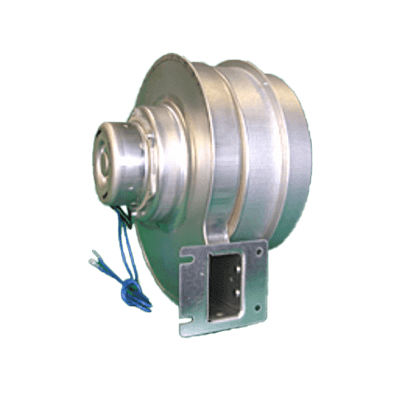What Is an AC Fan Motor?

An AC fan motor is a motor used in a fan that runs on AC power.
There are two types of electricity: DC power and AC power. DC power is a power source in which the direction of the current is always in one direction, while AC power is a power source in which the direction of the current is periodically switched.
DC is direct current and AC is alternate current. AC fan motors are motors that use AC power and whose drive load is a fan.
Uses of AC Fan Motors
AC fan motors are used in a wide range of applications, from consumer products to industrial equipment. The most familiar example is a fan. Some electric fans are equipped with AC fan motors. Most household outlets are AC powered, and AC fan motors are used in fans because of their simple construction.
Industrial applications include fans for local exhaust ventilation. They are used when working underground, in sewage tanks, or in other areas where lack of oxygen is a concern.
Principle of AC Fan Motors
An AC fan motor is an AC motor with a fan (blades) attached to its shaft axis. Eddy currents are generated in the rotor due to changes in the magnetic field generated when current is applied to the stator.
As a result, an induced current is generated by the so-called “Fleming’s right-hand (generator) law. The induced current and the magnetic field generate power by “Fleming’s left-hand (motor) law.
AC fan motors come in two types of AC power sources: single-phase and 3-phase. Therefore, single-phase AC fan motors usually have a built-in capacitor to advance the phase, or a structure called a shaded motor.
The advantage of AC motors is that they are simple in construction, have fewer parts, are more robust, and have a longer service life. The disadvantage is that it is more difficult to adjust the operating speed compared to DC motors.
Since AC motors operate on commercial power, are robust, and easy to maintain, it is expected that they will continue to be widely used in the future, depending on the application.
Other Information on AC Fan Motors
1. Differences Between AC Fan Motors and DC Fan Motors
The difference between AC fan motors and DC fan motors is the power source that drives the fan: AC fan motors operate on AC power, while DC fan motors operate on DC power.
AC fan motors have a constant rotating speed of the fan (blades) depending on the frequency of the AC power supply, while DC fan motors can inexpensively vary their rotating speed through circuitry.
2. What Is an AC Axial Fan?
An AC axial fan is an axial fan driven by an AC fan motor. An axial fan is a fan in which the direction of airflow with the fan is in the axial direction. Wind is generated in the direction perpendicular to the direction of rotation of the blades that generate the wind (axial direction).
As an application, it is often used for cooling machines that generate heat. Relatively little increase or decrease in airflow due to resistive objects is a characteristic of axial fans. In addition to axial fans, there are centrifugal fans and oblique flow fans with different airflow directions.
Centrifugal fans are fans that generate airflow orthogonally to axial fans, causing airflow in the centrifugal direction. A diagonal flow fan is like a fan between an axial flow fan and a centrifugal fan. It draws air in from the axial direction and blows air out in the diagonal direction of the shaft. It is characterized by its small size and light weight.
3. Structure of AC Fan
A typical fan structure consists of an impeller, casing, main shaft, and bearing.
- Impeller
The impeller is the part that produces the airflow and is the heart of the fan. It is related to the efficiency of airflow, and there are various types depending on the application, environment, and other factors. - Casing
The casing is the outer frame of the fan itself and the inner airflow path, and is the part that creates the inlet and discharge sections of the fan. - Spindle
The central shaft of the fan, which has the strength to support the impeller.
- Bearing
The part that receives the rotational motion of the spindle and supports the spindle while smoothing its action. The bearing reduces friction and wear. It is an important part because the poor quality of this part can lead to failure due to mechanical wear.